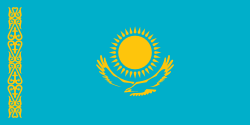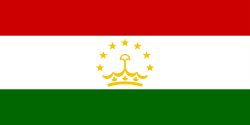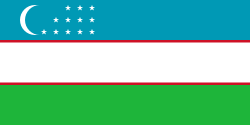General Information
Population
Immigration
Emigration
Working-age population
Unemployment rate
GDP
Migration Authorities
Responsible Body
Line Ministries
Ministry of Labour, Employment and the Social and Solidarity Economy
Ministry of Education, Children and Youth
Ministry of Equality between Women and Men
Agencies
Key Policy Documents
2008 Law on the free movement of persons and immigration
2022 Law on free movement and immigration
2017 Law on Luxembourg citizenship
2019 Law on the establishment of the National Reception Office
2015 (2021) Law on international protection and temporary protection
2008 Law concerning the admission and integration of foreigners in the Grand Duchy of Luxembourg
Description
Located in the heart of Europe, the Grand Duchy of Luxembourg has the highest foreigner rate in the EU amounting to 47.4% in 2020. With the development of the steel industry, the proportion of foreigners in Luxembourg has increased steadily over the past 100 years, and immigration has been surpassing emigration at least since 1990.
Several factors, primarily the economic opportunities and the very high standard of living, constitute a major motivation to settle in the country. The multilingual environment also encourages the integration of immigrants. The country has the highest Gallup potential net migration index among the EU Member States, with 131% in 2015-2017. Further, the historical tradition of migration from Portugal, and cross-border movement opportunities equally account for the high immigration rate. Consequently, 80% of the population growth in Luxembourg has been due to immigration between 2011 and 2021.
As of 1 January 2022, 304.167 foreigners lived in the Grand Duchy, of whom 13.7% were born in Luxembourg. EU citizens account for 80.8% of the total foreign population of the country. The largest group of 93.678 people (30.8%) comes from Portugal, followed by France and Italy with 49.173 and 24.116 persons respectively. The neighbouring Belgium and Germany represent the other two popular origin countries of immigrants. In 2021, 25.335 people moved to Luxembourg, of whom 1.577 were Luxembourg nationals. The largest group of immigrants who settled in Luxembourg yet again comprised Portuguese, French and Italian nationals. Meanwhile, Indians and Brazilians were the only non-European nationalities among the top 10 immigrant groups coming to Luxembourg.
In 2021, Luxembourg issued 23.965 registration certificates to EU citizens and 14.160 residence permits to non-EU nationals. The largest group of non-EU nationals holding residence permits in 2021 were Indians (1818) and Chinese (1332), most of whom received permits as workers (incl. EU Blue card category), family members, students, and for private reasons.
Migration in search of international protection to Luxembourg remains limited. The Immigration Department's Refugee Service recorded 2.057 asylum applications in 2012, 2.447 in 2015 and only 1.249 in 2021. The main countries of origin of refugees in 2021 were Syria, Eritrea, Afghanistan, Iraq and Sudan, while in the mid-2010s majority of refugees came from Syria, Morocco, Serbia and Algeria. On the other hand, the recognition rate exceeded 60% in 2021, while in 2012 only 66 persons received protection out of 2.176 decisions.
Due to the war in Ukraine, Luxembourg started granting temporary protection status for one year to persons who fled the war. Recipients can at any time renounce this status and voluntarily return home or apply for international protection. Beneficiaries of temporary protection have free access to the labour market and can register as job seekers with the Employment Development Agency. They have access to the support of the National Reception Office, including accommodation, adequate food and clothing, a monthly allowance, and access to medical care. At the end of August 2022, over 6.000 Ukrainians received temporary protection in Luxembourg.
Irregular migration in the country is rather inconsiderable. For the past decade, no more than 10 persons per year were refused entry to the country. A much higher proportion of irregular migrants is identified inside the country. In 2021, Luxembourg saw a record of 1.045 persons who stayed illegally, twice as many as in 2019 and seven times as many as in 2016. Even though Luxembourg has been issuing between 700 and 1050 orders to leave per year in recent times, the return rate remains low. Returns in 2021 concerned 201 individuals, of whom 143 were returned voluntary and 58 forcibly. The total number of returns in 2020 was 220 and 330 in 2019.
In terms of out-migration, in 2021, 15.959 persons left Luxembourg, of whom 3.063 were Luxembourg nationals and 12.896 foreigners, mainly Portuguese, French and Italians as also the case for immigration flows. Going abroad to study is one of the most significant reasons for emigration. Nearly one in two Luxembourg students (48%) goes abroad for education purposes. Germany and France represent the two most popular destinations in this regard. Furthermore, many Luxembourgers emigrate for professional reasons. Since the 1990s, more Luxembourg nationals have been leaving the country than returning. Between 2020 and 2022, the stock of Luxembourgers abroad increased by 32.9% exceeding 108.000 persons in 2022. Most of them live in France, Belgium, and Germany, as well as Brazil. Besides, a large number of non-residents have acquired Luxembourg citizenship, which further expands the stock of Luxembourgers abroad. Until the early 2000s, the acquisition of Luxembourg nationality was very limited, but the adoption of the law on dual nationality in 2009 boosted naturalization rates. The year 2018 saw a peak of 11.876 acquisitions. In 2022, the proportion of Luxembourgers with two nationalities reached 18.4%. Among Luxembourg residents, the French are the most numerous to have acquired Luxembourg nationality. From 2009 to 2021, out of a total of 86.811 acquisitions, 20.8% had French nationality, 17.7% had Portuguese nationality and 17.2% were Belgians. Luxembourg ancestry is behind a large number of naturalizations among Brazilian and American non-residents. Brexit also led to an increase in naturalizations, with 1.875 British nationals acquiring Luxembourg citizenship since 2016.
Luxembourg adopted the Global Compact for Refugees, as well as the Global Compact for Migration and other UN legal instruments on international migration. At the European and international level, the National Reception Office is responsible for representing the Grand Duchy of Luxembourg in various organizations and institutions. Luxembourg's cooperation on migration is largely coordinated within the EU framework. Luxembourg continues to participate in the missions of the European Union Asylum Agency and the European Border and Coast Guard Agency (Frontex), as well as supports the development of the Common European Asylum System.
Luxembourg concluded bilateral agreements with its neighbours to ensure the free movement of cross-border workers, who are employed in the health sector. In 2019, Grand Duchy initiated long-term visas facilitating the movement of third-country nationals without the requirement to apply for a residence permit. Additionally, to ensure the legal status of British citizens, largely present in the banking and service sectors, it passed 4 laws clarifying their status.
In 2018, Luxembourg adopted the new National Action Plan for Integration, which encourages the strengthening of local actors and support for municipalities, and the implementation of shared responsibility for integration in the host society by promoting intercultural exchanges. Proposed by the Ministry of Family, Integration and the Greater Region, the Welcome and Integration Contract is a voluntary integration program for non-Luxembourgers, which aims to encourage signatories to engage with Luxembourg society.
Relevant Publications



















































